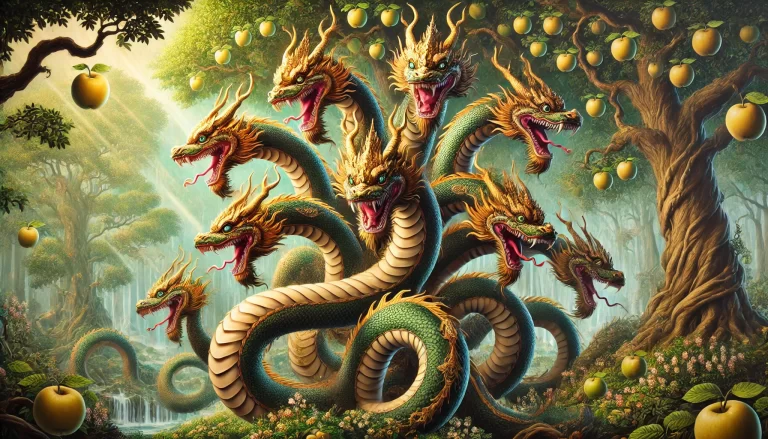The Enigmatic Quetzalcoatl: Mesoamerica’s Feathered Serpent Deity

The Enigmatic Quetzalcoatl: Mesoamerica’s Feathered Serpent Deity
Quetzalcoatl, the feathered serpent deity, is one of the most important and revered figures in Mesoamerican mythology. His name, derived from the Nahuatl language, combines “quetzal,” a vibrant bird with iridescent green feathers, and “coatl,” meaning serpent. This powerful symbol of wind, rain, and creation weaves through the spiritual and cultural tapestry of ancient civilizations like the Aztec, Toltec, and Maya, representing a complex blend of natural forces, cosmic balance, and divine authority.
The Origins of Quetzalcoatl
Quetzalcoatl’s origins trace back to the pre-Columbian era, with his worship dating as far back as the first millennium AD. He was particularly significant to the Toltec civilization, where he was revered as a creator god and culture hero. The Aztecs later adopted Quetzalcoatl into their pantheon, where he held a central place in their religious beliefs.
In various myths, Quetzalcoatl is portrayed as a creator who played a crucial role in the creation of the world and humanity. One prominent legend describes how he journeyed to the underworld, Mictlan, to retrieve the bones of previous generations of humans. After grinding these bones, he mixed them with his own blood to create the humans of the Fifth Sun, the current era in Aztec cosmology.
Symbolism and Attributes
Quetzalcoatl’s association with the wind, rain, and the fertile forces of nature made him a vital deity for agricultural societies. He was also linked to the morning star (Venus), embodying the dual aspects of life and death, light and darkness. This duality is further reflected in his twin brother, Xolotl, the god of death and the evening star.
As a feathered serpent, Quetzalcoatl symbolized the union of earth and sky, blending the grounded nature of the serpent with the soaring, ethereal quality of the bird. This imagery is a powerful representation of the cyclical nature of life, death, and rebirth, a theme that permeates Mesoamerican spirituality.
Quetzalcoatl was also considered a patron of knowledge, science, and the arts. He was believed to have introduced important cultural practices such as writing, agriculture, and the calendar, making him a civilizing force among humanity. His legacy as a bringer of wisdom and civilization has endured through the centuries, influencing various aspects of Mesoamerican culture.
Quetzalcoatl in Aztec Mythology
In Aztec mythology, Quetzalcoatl’s role was multifaceted. He was one of the four sons of the primordial gods Ometecuhtli and Omecihuatl, who were tasked with creating the world. His siblings, Tezcatlipoca, Huitzilopochtli, and Xipe Totec, represented different aspects of the cosmos and often engaged in cosmic struggles that shaped the world.
One of the most famous myths involving Quetzalcoatl is his rivalry with Tezcatlipoca, the god of night, sorcery, and discord. The two gods clashed frequently, with their conflicts often resulting in the creation and destruction of worlds. In one legend, Tezcatlipoca tricks Quetzalcoatl into drunkenness, leading to his shameful exile. In some versions of the myth, Quetzalcoatl then journeys to the eastern sea, where he immolates himself, only to be reborn as the morning star.
The Legacy of Quetzalcoatl
Quetzalcoatl’s influence extended beyond mythology into the social and political realms of Mesoamerican life. He was often depicted in art, architecture, and religious rituals, serving as a symbol of divine kingship and authority. The famous temple of Quetzalcoatl at Teotihuacan, with its intricate carvings of feathered serpents, stands as a testament to his enduring legacy.
Even after the fall of the Aztec Empire, the legend of Quetzalcoatl persisted. Some post-conquest stories suggest that the Aztecs believed the arrival of Spanish conquistadors was the return of Quetzalcoatl, who, according to prophecy, was expected to come back from across the sea.
Today, Quetzalcoatl remains a powerful symbol of Mesoamerican heritage and identity. His story continues to inspire art, literature, and popular culture, reminding us of the rich and complex spiritual traditions of the ancient Americas.
In conclusion, Quetzalcoatl’s enduring legacy as a deity of wind, rain, creation, and culture highlights the deep connection between humanity and the natural world in Mesoamerican thought. As a figure of wisdom, transformation, and cosmic balance, Quetzalcoatl continues to captivate and inspire those who seek to understand the mysteries of the past.






